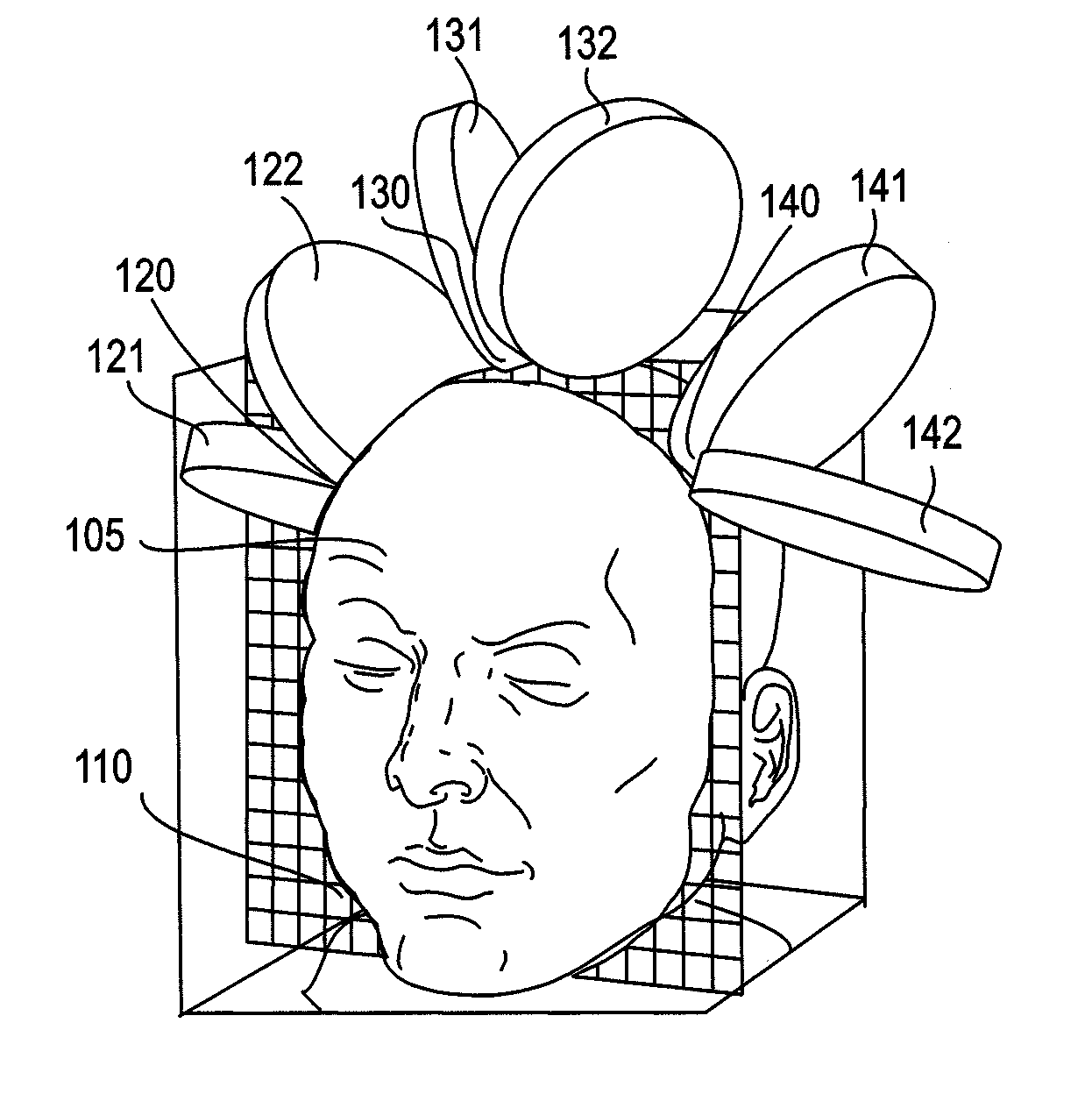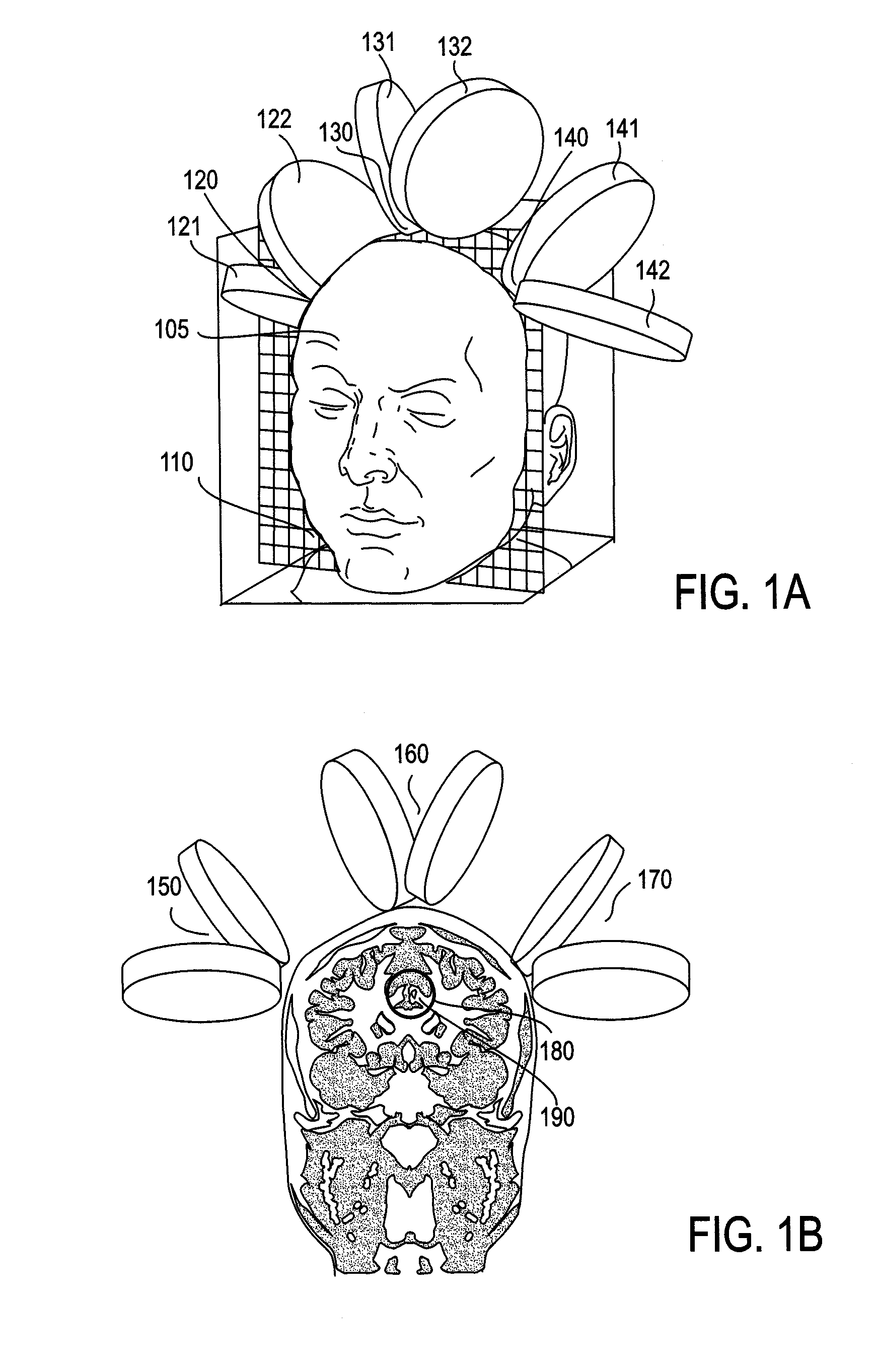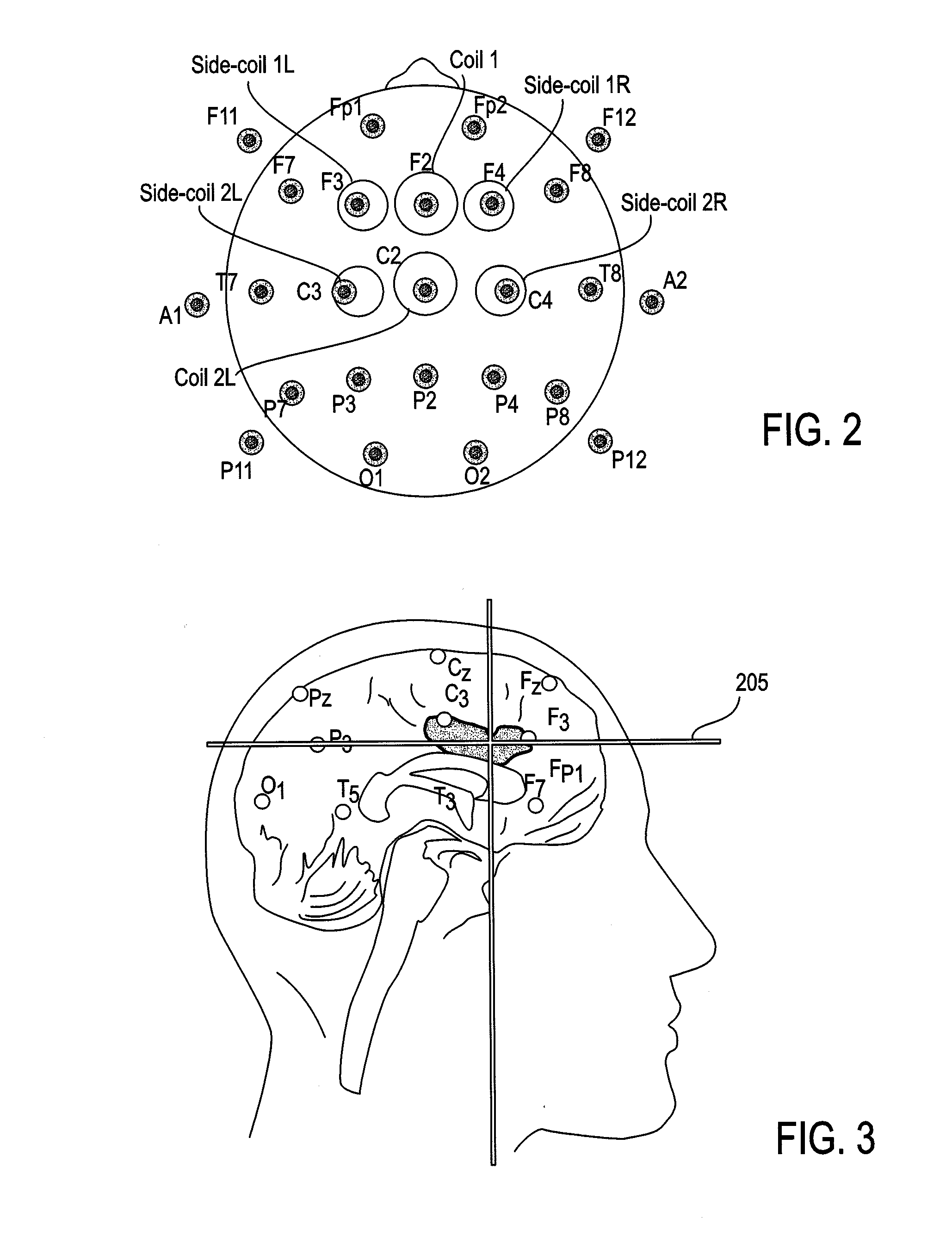Transcranial magnetic stimulation field shaping
a transcranial magnetic stimulation and field shaping technology, applied in magnetotherapy, magnetotherapy using coils/electromagnets, magnetotherapy, etc., can solve the problems of pain and discomfort of patients, inability to achieve deep brain modulation, undetectable side effects such as seizures, etc., to reduce current (power), enhance the focusing of the emitted field, and reduce the power applied
- Summary
- Abstract
- Description
- Claims
- Application Information
AI Technical Summary
Benefits of technology
Problems solved by technology
Method used
Image
Examples
examples
[0055]FIG. 1A shows one example of an array of three TMS electromagnet stimulator coils arranged around a patient's head. In this variation (which may be referred to as a triad array), the patients head 105 is shown transected by plane 110, which corresponds to the cross-section shown in FIG. 1B. The modified image shown is based in part on image data from Voxel-Man 3D Navigator. In FIGS. 1A and 1B, the V-shaped double coil 120 (also designated as coil A) is composed of circular coils 121 and 122, and bent at the center where the return path of the current in both coils is in the same direction. Similarly, V-shaped double coil 130 (also designated as coil B) is composed of circular coils 131 and 132 joined at a bent center, and V-shaped double coil 140 (also designated as coil C) is composed of circular coils 141 and 142, joined at a bent center. As described above, any of these coils may also be of other designs, for example flat double coils, flat-bottomed (swept-wing) V coils, or...
PUM
 Login to View More
Login to View More Abstract
Description
Claims
Application Information
 Login to View More
Login to View More - R&D
- Intellectual Property
- Life Sciences
- Materials
- Tech Scout
- Unparalleled Data Quality
- Higher Quality Content
- 60% Fewer Hallucinations
Browse by: Latest US Patents, China's latest patents, Technical Efficacy Thesaurus, Application Domain, Technology Topic, Popular Technical Reports.
© 2025 PatSnap. All rights reserved.Legal|Privacy policy|Modern Slavery Act Transparency Statement|Sitemap|About US| Contact US: help@patsnap.com



